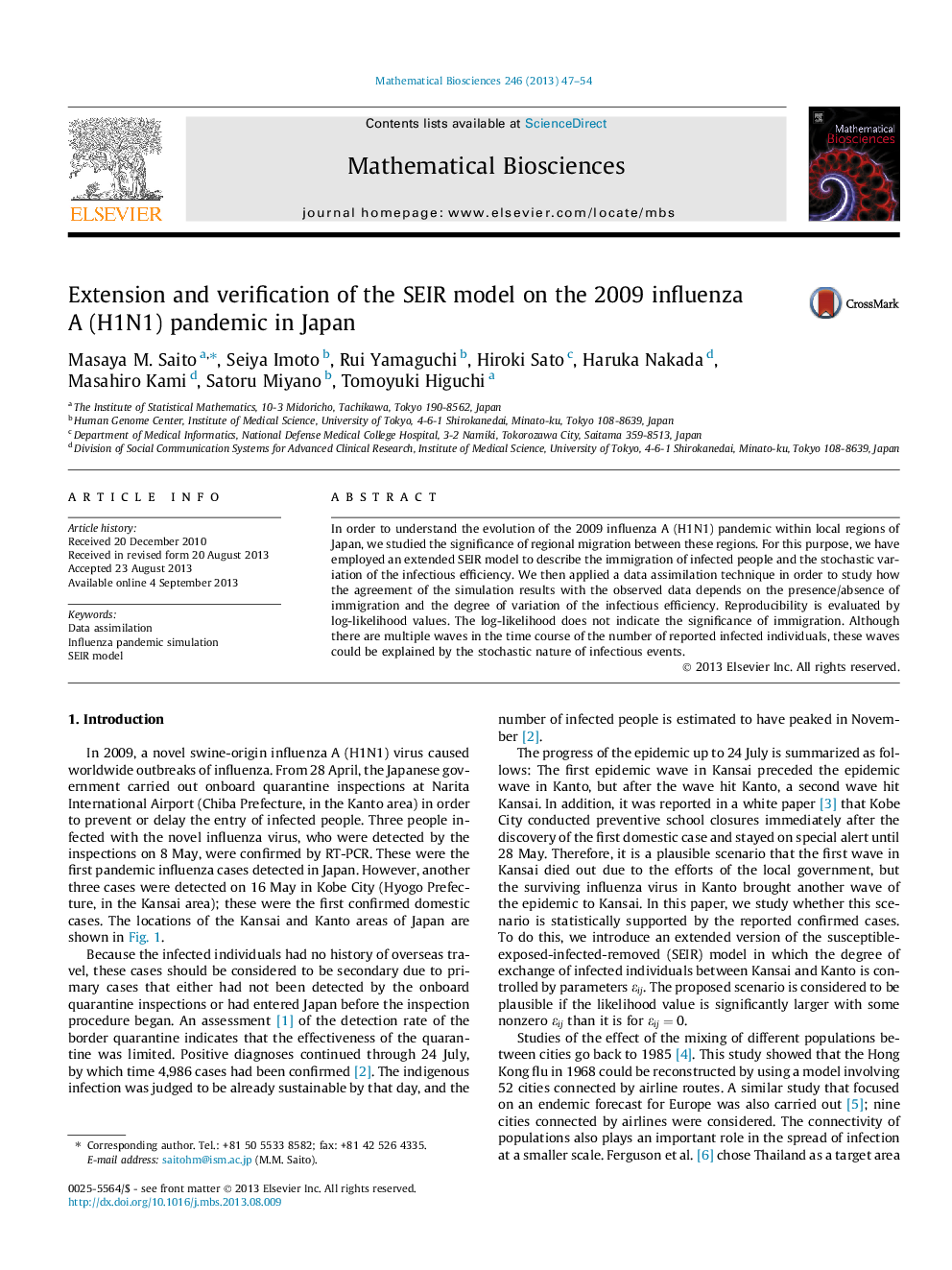| Article ID | Journal | Published Year | Pages | File Type |
|---|---|---|---|---|
| 4500149 | Mathematical Biosciences | 2013 | 8 Pages |
•Our target problem is 2009 influenza pandemic in local cities of Japan.•We study the significance of migration of patients using an extended SEIR model.•Cases with/without migration are compared based on data assimilation technique.•The advantage of a connected or the disconnected model depends on the scale of the number of patients.
In order to understand the evolution of the 2009 influenza A (H1N1) pandemic within local regions of Japan, we studied the significance of regional migration between these regions. For this purpose, we have employed an extended SEIR model to describe the immigration of infected people and the stochastic variation of the infectious efficiency. We then applied a data assimilation technique in order to study how the agreement of the simulation results with the observed data depends on the presence/absence of immigration and the degree of variation of the infectious efficiency. Reproducibility is evaluated by log-likelihood values. The log-likelihood does not indicate the significance of immigration. Although there are multiple waves in the time course of the number of reported infected individuals, these waves could be explained by the stochastic nature of infectious events.
